Trout in the classroom (TIC) is an environmental education experience that fosters hands-on learning through the rearing of trout from eggs to fry. The program provides K-12 students meaningful opportunities to apply relative topics taught in the curriculum to the life cycles emerging before them, as well as to the variety of challenges that arise out of maintaining a steady state environment for the growing trout. A General Overview...
While the Trout in the Classroom program has been adopted on a robust level in many states throughout the U.S., it is just beginning to emerge as a teaching tool for schools here in Colorado. In 2016, Colorado TU supported five sites around the state. In 2017, we expect that number to more than double, with TIC programs being adopted by teachers, TU chapters, and their local communities throughout the state. The sites will range from elementary school classrooms to college science labs and can be found across Colorado –from the suburbs of Aurora, to the Grand Mesa on the Western Slope.
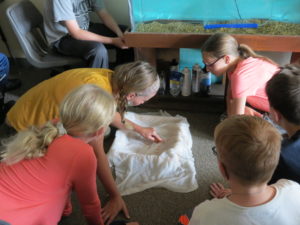
Trout in the Classroom offers a high degree of flexibility for teachers when it comes to applying trout life cycles to the core curriculum. Lesson plans can be adapted to link learning objectives with “real world” outcomes.
For example, students at a site in Blackhawk, CO routinely help test the water quality of their tank; identifying potential issues (i.e. the water is becoming too acidic), using problem solving skills to propose solutions (add “x amount” of a certain chemical compound), and charting the results over time. Is the health of the fish or pH improving?
Within any TIC activity, youth find themselves emboldened by opportunities to apply math and science concepts to actual problems, as well as receive the added social benefits of identifying challenges within their environment and taking concerted efforts to solve them.
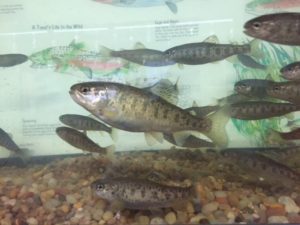 "I like testing the water to help keep the fish alive," says one of the students in the Blackhawk classroom.
"I like testing the water to help keep the fish alive," says one of the students in the Blackhawk classroom.
In short, TIC is not just helping to prepare the upcoming wave of engineers and scientists – it is also empowering the next generation of stewards.
To demonstrate the impacts that TIC is having in classrooms around the state, Colorado TU will be following the program in a handful of schools and providing regular updates from the field.
October-November: The Eggs Have Arrived!
At the time of this article (early November), there are currently four classrooms that have eggs in the water and several others that are in the process of setting up their equipment. Once a site is ready, the rainbow trout eggs are shipped over night from the Ennis National Fish Hatchery in Montana and arrive at the classroom early the next day. Teachers have been working closely with their students to carefully place the eggs in the tank and some are even starting to see them hatch now!

Profile: 5th Grade Science Class at Gilpin County School, Blackhawk, CO
Student: Avery Ramsey, 5th Grade
"Our trout program in Gilpin is really cool. It is amazing to watch them grow. We learned about each stage in a trout’s life, and now we actually get to see it!"
Teacher: Vanessa Grenader
"Trout in the classroom provides hands on, inquiry-based learning. As a project based teacher, this program fits into my curriculum perfectly. I am able to engage the students, and integrate the 5th grade science standards into the program seamlessly. My students feel like real scientists as they learn. Now, I can’t imagine a school year without our trout!"
--
For more information on Trout in the Classroom, you can follow the links below, or contact Dan Omasta (domasta@tu.org) at Colorado TU.
National Trout in the Classroom Project



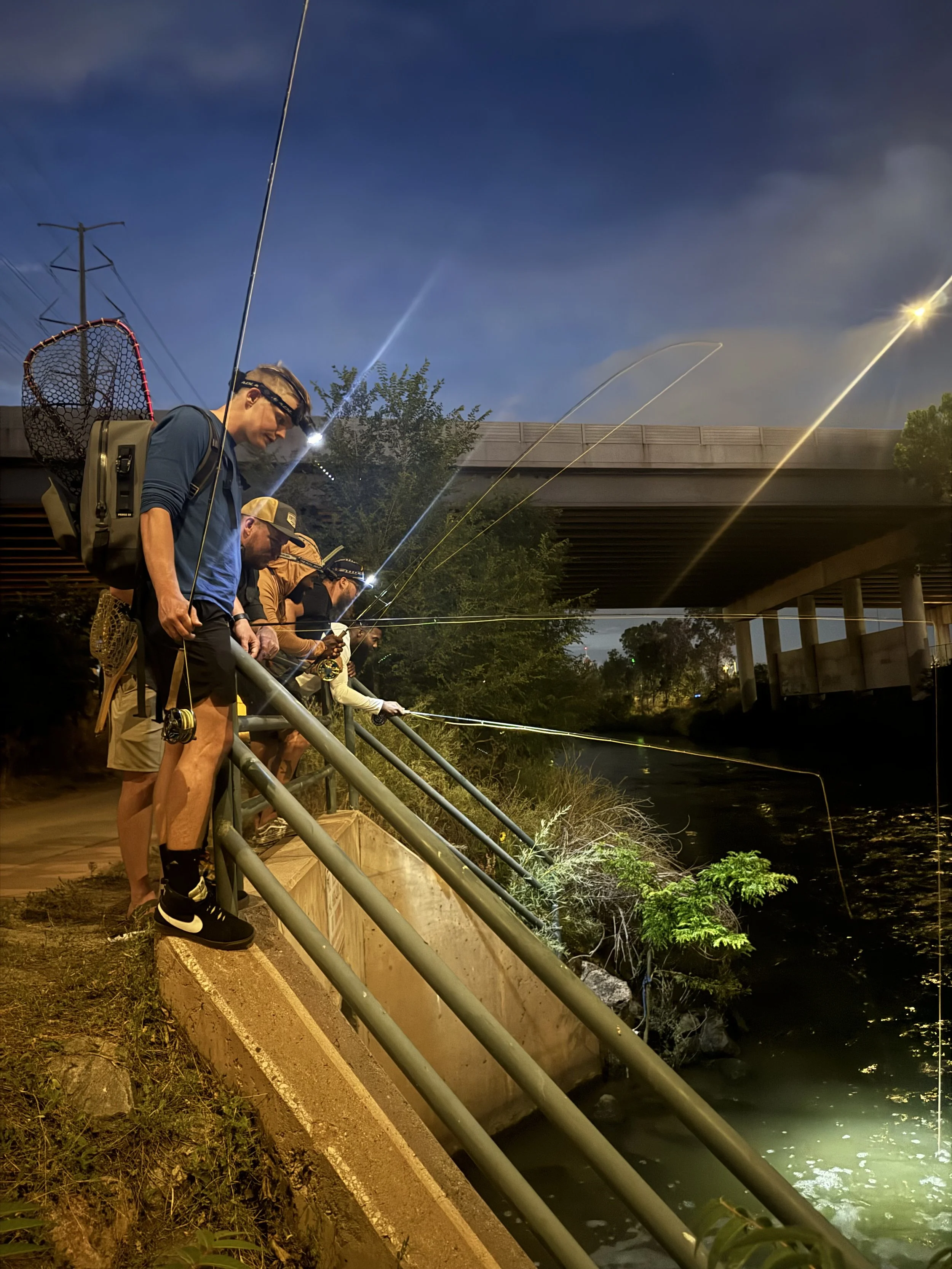



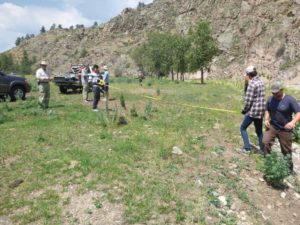 A capstone activity encompasses a half-day restoration project on a local stream, designed and supervised by the Wildlands Restoration Volunteers organization. As campers better understand the relationship of trout as an indicator of water quality, they gain appreciation for the need to protect our coldwater streams - while also discovering that fly fishing can become an enjoyable, lifelong pastime.
A capstone activity encompasses a half-day restoration project on a local stream, designed and supervised by the Wildlands Restoration Volunteers organization. As campers better understand the relationship of trout as an indicator of water quality, they gain appreciation for the need to protect our coldwater streams - while also discovering that fly fishing can become an enjoyable, lifelong pastime.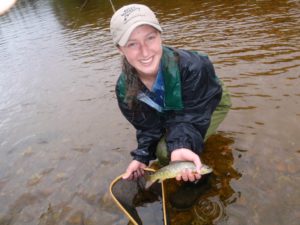 Beyond a nominal $30.00 acceptance fee, funding for camp is provided by generous corporate and individual chapter member support. Additionally, all fishing attire and equipment is provided by RMFC-TU. Camp activities occur on the Poudre River, Big Thompson River headwaters in Rocky Mountain National Park, private ponds and Fort Collins Parks. Indoor classes are held in corporate and community conference rooms.
Beyond a nominal $30.00 acceptance fee, funding for camp is provided by generous corporate and individual chapter member support. Additionally, all fishing attire and equipment is provided by RMFC-TU. Camp activities occur on the Poudre River, Big Thompson River headwaters in Rocky Mountain National Park, private ponds and Fort Collins Parks. Indoor classes are held in corporate and community conference rooms.
 Monday was the first full day of camp and after waking up, the kids went to the stream and pond at the ranch to learn about the entomology of the watershed. The kids took bug samples to learn about what the fish would be eating in the area and took water samples to determine the health of the stream and pond. After the sampling, students ate lunch and headed to nearby North Lake to fish for the afternoon. It wasn't long before kids started hooking into fish and in the first day over half of the kids had landed their first fish of the camp and for some, their first fish ever.
Monday was the first full day of camp and after waking up, the kids went to the stream and pond at the ranch to learn about the entomology of the watershed. The kids took bug samples to learn about what the fish would be eating in the area and took water samples to determine the health of the stream and pond. After the sampling, students ate lunch and headed to nearby North Lake to fish for the afternoon. It wasn't long before kids started hooking into fish and in the first day over half of the kids had landed their first fish of the camp and for some, their first fish ever. Over the first few days the kids had free time to tie flies and practice their fly fishing skills and on Wednesday they had a chance to hone in those skills and use the flies they have tied. The day started off by traveling to North Lake for the morning. While at North Lake kids were catching fish left and right and by halfway through the morning, everyone had caught a fish. After returning to the camp, the kids ate lunch and broke up into teams of three for some additional fishing. One group headed to some beaver ponds, another group fished the stream, and the third group fished a lake on the ranch property.
Over the first few days the kids had free time to tie flies and practice their fly fishing skills and on Wednesday they had a chance to hone in those skills and use the flies they have tied. The day started off by traveling to North Lake for the morning. While at North Lake kids were catching fish left and right and by halfway through the morning, everyone had caught a fish. After returning to the camp, the kids ate lunch and broke up into teams of three for some additional fishing. One group headed to some beaver ponds, another group fished the stream, and the third group fished a lake on the ranch property.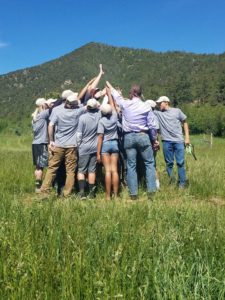 When the 15 campers arrived on June 11, there were nervous faces and uneasy feelings about what to expect for the upcoming week. But just a few days later on June 16 the campers had a hard time leaving one another. The friendships formed, the lessons learned, and the memories made will carry on forever and many students mentioned coming back in 2018.
When the 15 campers arrived on June 11, there were nervous faces and uneasy feelings about what to expect for the upcoming week. But just a few days later on June 16 the campers had a hard time leaving one another. The friendships formed, the lessons learned, and the memories made will carry on forever and many students mentioned coming back in 2018. This Spring, he graduated from Western State University in Gunnison majoring in Chemistry with an emphasis in Biochemistry. But he's leaving behind an incredible legacy of coldwater conservation leadership. In 2013, Adam founded The Gunnison Sockeyes, the first TU Costa Five Rivers collegiate club in the nation to found their club based on conservation rather than fly fishing. The club boasts over 160 members and has logged in excess of 220 man hours of service work in the Gunnison Watershed in the fields of Lake Trout Removal, Kokanee Salmon Spawning, Electroshocking, Stonefly Reintroduction and River Clean Ups.
This Spring, he graduated from Western State University in Gunnison majoring in Chemistry with an emphasis in Biochemistry. But he's leaving behind an incredible legacy of coldwater conservation leadership. In 2013, Adam founded The Gunnison Sockeyes, the first TU Costa Five Rivers collegiate club in the nation to found their club based on conservation rather than fly fishing. The club boasts over 160 members and has logged in excess of 220 man hours of service work in the Gunnison Watershed in the fields of Lake Trout Removal, Kokanee Salmon Spawning, Electroshocking, Stonefly Reintroduction and River Clean Ups. Growing up on the banks of the Mississippi and experiencing its periodic floods gave me no background for understanding the water scarcity issues of the west. When the mighty Miss and its tributaries flooded they used to let us older boys out of school and permit trustee crews from the state prison to help sandbag. It was usually a problem of too much water, so I was fascinated by the complexity of water law created by the scarcity of water and the mission of TU to conserve and correct the mistakes of the past just seemed to me to make manifest sense.
Growing up on the banks of the Mississippi and experiencing its periodic floods gave me no background for understanding the water scarcity issues of the west. When the mighty Miss and its tributaries flooded they used to let us older boys out of school and permit trustee crews from the state prison to help sandbag. It was usually a problem of too much water, so I was fascinated by the complexity of water law created by the scarcity of water and the mission of TU to conserve and correct the mistakes of the past just seemed to me to make manifest sense. My favorite fishing spot is any spot I happen to be in which harbors fish. I advocate carrying a flyrod in every vehicle because you never know when you will run into a fishing emergency! Although exotic locales beckon to many I have trouble getting too far away from my home rivers - and ponds. I flyrod a lot of local natural area ponds for warmwater species too. Also take a trip to Canada each June with a couple of RMF's founding fathers, but home waters are the preferred locales since they are close.
My favorite fishing spot is any spot I happen to be in which harbors fish. I advocate carrying a flyrod in every vehicle because you never know when you will run into a fishing emergency! Although exotic locales beckon to many I have trouble getting too far away from my home rivers - and ponds. I flyrod a lot of local natural area ponds for warmwater species too. Also take a trip to Canada each June with a couple of RMF's founding fathers, but home waters are the preferred locales since they are close.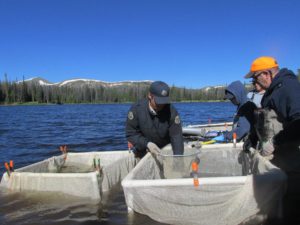 In the South Platte basin, Colorado TU and chapters worked to engage young, inner city, girls through the great outdoors by introducing them to fly fishing and conservation; CTU worked with Colorado Parks and Wildlife to reintroduce the Colorado state fish, Greenback Cutthroat Trout, to it's native watershed along the Front Range; Trout Unlimited tackled abandoned mine issues, and various chapters worked to repair their homewater streams from the devastating floods of 2013.
In the South Platte basin, Colorado TU and chapters worked to engage young, inner city, girls through the great outdoors by introducing them to fly fishing and conservation; CTU worked with Colorado Parks and Wildlife to reintroduce the Colorado state fish, Greenback Cutthroat Trout, to it's native watershed along the Front Range; Trout Unlimited tackled abandoned mine issues, and various chapters worked to repair their homewater streams from the devastating floods of 2013.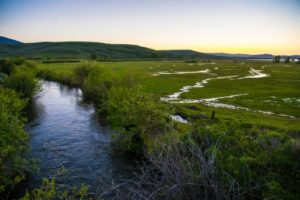 In the Colorado River basin, TU helped secure protections for the Roan Plateau and Thompson Divide from harmful oil and gas development, worked with local ranchers and farmers to improve the health of the Upper Colorado while enhancing agriculture water usage. TU also helped lead the Learning by Doing initiative that, among other things, secured $8 million in funds to protect and restore the Upper Colorado River.
In the Colorado River basin, TU helped secure protections for the Roan Plateau and Thompson Divide from harmful oil and gas development, worked with local ranchers and farmers to improve the health of the Upper Colorado while enhancing agriculture water usage. TU also helped lead the Learning by Doing initiative that, among other things, secured $8 million in funds to protect and restore the Upper Colorado River.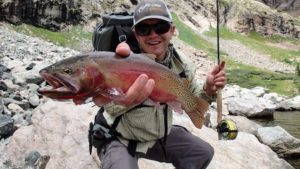 In the Rio Grande basin, Trout Unlimited worked to protect the Great Sand Dunes Cutthroat from potential changes in the environment. The Rocky Mountain Flyathlon came to Saguache for the annual race and fishing events that help raise money for Colorado TU's work in protecting native trout and their habitats. The local chapter and Trout Unlimited also worked to repair sections of the Conejos and ensure that winter flows were hospitable for trout.
In the Rio Grande basin, Trout Unlimited worked to protect the Great Sand Dunes Cutthroat from potential changes in the environment. The Rocky Mountain Flyathlon came to Saguache for the annual race and fishing events that help raise money for Colorado TU's work in protecting native trout and their habitats. The local chapter and Trout Unlimited also worked to repair sections of the Conejos and ensure that winter flows were hospitable for trout.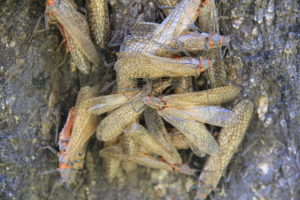 Parking lot to the River - Matching the hatch starts when you park the truck and continue on your way to the water's edge. While not the most appetizing script to read, plastered to your windshield and the grill of your car is a record of the bugs that were flying and hopping along the lake or river that you are planning to fish. The fragile wings of mayflies and sturdy grasshopper legs act like braille to the astute angler and are the first clues as to what flies they might fish that day. As you leave the parking lot and work your way down to the water, observe what is hopping and flying around you. Grasshoppers frantically leaping off the trail ahead of you, the wayward beetle landing on your shoulder, and the shrilling of the cicada, and caddis flies stirring into flight as you push through streamside trees are all indicators of food that might be falling or landing on the water.
Parking lot to the River - Matching the hatch starts when you park the truck and continue on your way to the water's edge. While not the most appetizing script to read, plastered to your windshield and the grill of your car is a record of the bugs that were flying and hopping along the lake or river that you are planning to fish. The fragile wings of mayflies and sturdy grasshopper legs act like braille to the astute angler and are the first clues as to what flies they might fish that day. As you leave the parking lot and work your way down to the water, observe what is hopping and flying around you. Grasshoppers frantically leaping off the trail ahead of you, the wayward beetle landing on your shoulder, and the shrilling of the cicada, and caddis flies stirring into flight as you push through streamside trees are all indicators of food that might be falling or landing on the water.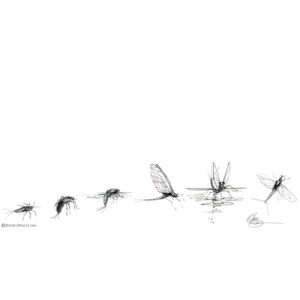 Under the Water - It is beneath the surface of the water that trout do 75% of their feeding, and that's where the angler's most important information will be found. Using an Invertebrate Seine along the streambed and pulling rocks from the current to observe what is holding onto their surface will give you a detailed menu of which bugs are most abundant, as well as their size and color so that you can lay your fly box alongside and choose the closest match.
Under the Water - It is beneath the surface of the water that trout do 75% of their feeding, and that's where the angler's most important information will be found. Using an Invertebrate Seine along the streambed and pulling rocks from the current to observe what is holding onto their surface will give you a detailed menu of which bugs are most abundant, as well as their size and color so that you can lay your fly box alongside and choose the closest match.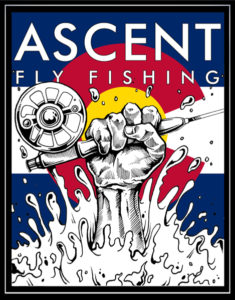
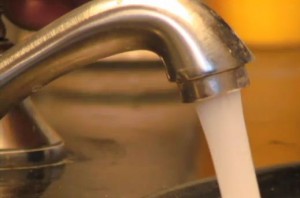 Recycle water:
Recycle water:
